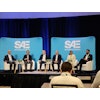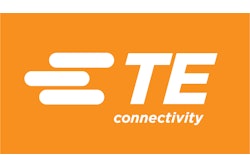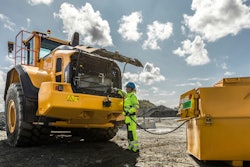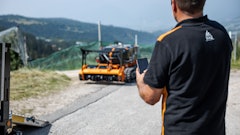
Global Markets
In previous years, the BRIC countries were the primary areas of focus for global expansion and investment. Since then, Brazil and Russia’s prevalence seems to have waned. What do you consider to be the strong markets for opportunity around the world?
Indeed, the political situation in Russia and Brazil has somewhat slowed the development of our markets in these countries. However, Brazil seems to be getting back on track. India and China remain very strong in both vehicle production volumes and vehicle technology upgrades. New regulations in these countries are fueling the technical development. Still though, markets like Europe and North America are very strong, with tremendous growth in the last 2 years. New technologies, like vehicle electronification, may shift the market as China is investing heavily.
Are there new regions of interest? What particular industry or equipment type are you looking to expand in these regions and why?
We are seeing that South-East Asia is starting to follow the path of China and India in terms of development. This is an area of high potential and interest for us – first in the 2-wheeler market, followed by light-duty and delivery trucks. The countries require a lot of infrastructure; therefore, construction vehicles may also be of interest. Strong relations with Japan, China, and India will shape the market.
Politics & Government
What potential policies are you keeping your eye on that could impact (or have already impacted) your company, for the better or worse?
- Steel & Aluminum tariffs; reciprocal tariffs
- Proposed lower emissions standards for cars and trucks in the U.S.
- NAFTA renegotiation
- TPP
- Infrastructure bill
- Farm Bill
- Tax reform
- Other?
For many years, emission standards and vehicle safety regulations have been the key drivers for technology changes in vehicles. There are still regions of the world that are catching up on the standards and regulations, but it is happening rapidly. In mature markets, we see similar trends, driving the development of electrical or autonomous vehicles. Recently, the tariffs became a very hot topic and may heavily impact localization decisions for TE, our customers and suppliers. Infrastructure or farm bills in the USA or other regulations outside of the country directly affect our largest customers and we observe them with interest, so that we can react to changes in demands.
Diesel vs. Electric
Do you think there will always be a place for diesel powered equipment for heavy-duty applications? Why or why not?
Diesel is a very mature and proven technology in the industry. Today, there are no alternatives to directly replace diesel in long distance transportation or in heavy-duty off-highway applications. For example, with electrical vehicles, the battery size, weight, capacity and charging time do not allow for a full replacement. Other technologies, like hydrogen fuel cells are in their infancy stage. Although very interesting, they are still far from being widely adopted. Cost is obviously another factor that prevents moving away from diesel power.
With city transportation (both people and goods), there’s more pressure from local governments to move from diesel power. In this situation, grants and subsidies can be used to help with the costs. Also, the distances and regular routes in city transportation allow for vehicles to better utilize battery charging. In general, the market awaits a breakthrough in battery energy density or a completely new technology. Only then will we see a shift away from diesel.
What would electric power sources have to achieve in order to replace the diesel engine for heavy-duty applications?
Significantly higher energy density. Batteries need to give customers similar flexibility to using a fuel tank: several hundred miles of distance and 15-minute charging. There may be a compromise between these two: larger capacities will make the charging time less important and vice versa. Also, the weight of the battery cannot influence the load capacity of the truck.
How do the diesel bans in several major cities around the world play into the direction your company is taking for electric vehicle development, if at all?
TE Industrial & Commercial Transportation plays a significant role in vehicle electrical architecture – both for traditional, low voltage applications, as well as for high voltage, high power which is required in hybrid or electrical vehicles. The shift from diesel to electric requires a completely new design by our customers and we take an active role in these changes.
What do you think is the next step for emissions regulations after Tier 4 Final and Stage V?
From observing the discussions in Europe, the next natural step will probably be CO2 reduction.
How are you looking at engine system design and development for the future? Modularity? More integrated sensors? More compact design? Etc.
If indeed CO2 reduction will be one of next drivers of the regulations, we will see a further downsizing of engines, and increasing temperature and pressure. Engines will need to demonstrate even stricter parameters of normal work. This will naturally mean a need to control and measure further areas. Engines will have more sensors, will become more compact, and will work in even harsher conditions.
IoT & Connectivity
How is your company investing in IoT services and opportunities?
The Industrial Internet of Things (IIoT or Industry 4.0) will revolutionize global manufacturing through increased automation, productivity, and safety. Making this kind of smart factory transformation requires our connectors, sensors, high speed data communications solutions, and engineering expertise. To accelerate Industry 4.0 and enable smart factories, TE is providing data, power, and signal solutions that include contactless connectors. Our solutions for Industry 4.0 are in all leading sectors of industry, such as automotive, energy, telecommunications, consumer electronics, healthcare, aviation and defense. To maintain the position as a leader for Industry 4.0 solutions in the future, over 5% of TE’s annual turnover is invested in research and development: in 2016, we invested USD 650 million in this field.
How do you see connectivity and machine learning changing the vehicle landscape in the next decade?
We can see the future starting today: all major OEMs are working on autonomous on-highway vehicles. For off-highway, we can already see autonomous vehicles in operation. All of this requires high level machine learning systems and high-speed data connectivity. In specific situations, especially for mining or construction, one can easily imagine driver groups working from service centers, while the bulldozers or other equipment are thousands of miles away. You can have teams in different time zones allowing the equipment work 24/7, even in places hardly accessible for people due to environmental conditions. Drivers operating online may require different skills; maybe the skills our children gained playing video games will be transferred for gainful employment to operate autonomous vehicles.
Automation & Smart Systems
What smart systems or components does your company currently offer? If they are application or industry specific, include that detail in the explanation.
TE Connectivity offers connectors, sensors, high-speed data communications solutions, and engineering expertise across all industries, including heavy-duty vehicles, where the high-speed data transfer meets another requirement: harsh environment conditions. Whether in a mine, in a field, or in a construction area – the vibrations, temperatures or simply mud and dirt cannot stop the vehicles from running.
Challenges & Opportunities
What excites you about the future of the heavy-duty vehicle market?
Today, we are witnessing a new start to the industry. For the past decades, we have been observing continuing improvements of existing technologies. In the future, we will see a complete shift: vehicles without drivers communicating to each other, remote operators, smart platooning, when cars or trucks can instantly hook-up to each other. Safety systems will reduce the road casualties. The powertrain will start moving away from diesel. What excites me the most is that TE is in the middle of all these changes, helping to create a safer, sustainable, productive and connected future.



















